Overview
The article discusses the seven best marketing strategies for real estate projects that utilize 3D renderings, emphasizing their role in enhancing client engagement and driving sales. It supports this by illustrating how strategies like virtual tours, social media advertising, and website integration leverage high-quality 3D visuals to create immersive experiences, thereby increasing buyer interest and confidence in properties.
Introduction
The integration of 3D renderings into real estate marketing has ushered in a new era of property visualization, fundamentally altering how potential buyers engage with listings. These sophisticated visualizations provide an immersive experience that transcends traditional marketing methods, allowing clients to envision spaces before they are constructed.
As the industry increasingly embraces advanced rendering techniques, the ability to showcase intricate design elements, lighting, and spatial relationships becomes paramount. This article delves into the multifaceted applications of 3D renderings, examining their role in enhancing client engagement, driving sales, and differentiating brands in a competitive market.
With the rapid evolution of technology, including augmented and virtual reality, real estate professionals are now equipped to create compelling narratives around their properties, fostering deeper emotional connections and ultimately transforming the purchasing journey.
The Essential Role of 3D Renderings in Real Estate Marketing
3D visuals have fundamentally changed property marketing, highlighting the best Marketing real estate projects using 3D renderings and providing potential purchasers a realistic depiction of assets before their construction. These advanced visualizations are considered some of the best Marketing real estate projects using 3D renderings, as they facilitate an immersive experience, allowing clients to engage deeply with the space, layout, and design elements, while also playing a critical role in the pre-sales phase, enhancing project confidence and generating investment. By employing advanced visualization techniques, real estate professionals can effectively showcase critical features such as lighting, materials, and spatial relationships, fostering a deeper emotional connection between buyers and the property.
Furthermore, our dedication to producing visually stunning and technically precise images is reflected in our meticulous attention to detail, ensuring high-quality outputs that enhance client satisfaction and marketing effectiveness. The versatility of 3D renderings enables their utilization across various platforms—such as websites, social media, and presentations—maximizing exposure and engagement with potential clients. Recent advancements in 3D visualization technology highlight its significance in contemporary property marketing, particularly in the best Marketing real estate projects using 3D renderings, offering a cost-efficient alternative that conserves both time and resources while boosting sales.
This dedication to innovation is crucial for property companies seeking to connect with clients who value modern methods. As mentioned by industry specialist Alex Kondratiev, a luxury condominium project saw an impressive 25% rise in sales velocity due to superior 3D images, which enthralled purchasers with realistic visualizations. This trend illustrates the growing necessity for real estate businesses to adopt the best marketing real estate projects using 3D renderings, which align with the expectations of today’s clients and foster community connections from the outset.
Effective Marketing Strategies Utilizing 3D Renderings
Virtual Tours: Incorporating 3D visuals into virtual tours enables prospective clients to examine properties from the comfort of their homes, offering a unique interactive experience that greatly enhances engagement and interest. These high-quality visualizations are essential for the best Marketing real estate projects using 3D renderings, acting as a window into the future of each project and enabling stakeholders to grasp the vision behind the blueprints. The flexibility of virtual tours allows buyers to view homes without the constraints of work schedules or family commitments. Research indicates that the best Marketing real estate projects using 3D renderings, like virtual tours, experience a notable increase in bookings, with conversion ratios improving by 16% to 67%. This demonstrates the tangible benefits of such technologies in enhancing customer engagement and building excitement about what’s to come while also facilitating informed decision-making.
Social Media Advertising: The strategic use of eye-catching 3D visuals in social media advertisements represents one of the best Marketing real estate projects using 3D renderings, facilitating quick attention capture, which is essential in today’s fast-paced digital landscape. Platforms like Instagram and Facebook are particularly well-suited for showcasing high-quality imagery, making them ideal venues for presenting the best marketing real estate projects using 3D renderings that resonate with audiences. Significantly, studies indicate that social media interaction with 3D visuals in property can greatly improve visibility and interest, reflecting trends observed in the automobile sector where 54% of corporate pages utilize 360-degree images. This visual appeal not only attracts prospective clients but also enhances their confidence in the best Marketing real estate projects using 3D renderings that are being presented.
Website Integration: Incorporating the best Marketing real estate projects using 3D renderings on property websites significantly improves user experience. By providing high-quality visuals, these integrations highlight the best Marketing real estate projects using 3D renderings, keeping visitors engaged longer and increasing the likelihood of inquiries and potential sales. The ability to see detailed elements, such as room layouts and lighting conditions, bridges the gap between imagination and reality, reducing uncertainties. As highlighted by Gregory Gronbacher, a seasoned real estate sales agent, “The best Marketing real estate projects using 3D renderings can significantly influence potential clients’ interest and decision-making,” emphasizing the essential role of quality imagery in attracting discerning purchasers.
The incorporation of 3D visuals in brochures and flyers significantly enhances the quality of the best Marketing real estate projects using 3D renderings. High-resolution images impart a professional touch, distinguishing properties in a competitive market. This tactic not only enhances visual appeal but also conveys a sense of quality and attention to detail that can attract discerning buyers, ultimately enhancing property value through market differentiation in the best Marketing real estate projects using 3D renderings.
Client Presentations: When presenting to clients or investors, utilizing 3D visuals is among the best Marketing real estate projects using 3D renderings to effectively convey design concepts and project potential. These visual aids facilitate discussions on the best Marketing real estate projects using 3D renderings, allowing stakeholders to visualize the end product, which can expedite decision-making processes and foster a collaborative environment. Gregory Gronbacher’s insights on the impact of visuals further reinforce the effectiveness of this approach in building excitement and confidence among clients.
Email Marketing: The strategic incorporation of 3D visuals in the best Marketing real estate projects using 3D renderings can lead to improved open and click-through rates. Eye-catching images entice recipients to delve deeper into the details of the properties being marketed, enhancing engagement and information retention.
Event Displays: At real estate expos or open houses, large-format prints of 3D images represent some of the best Marketing real estate projects using 3D renderings, attracting foot traffic and sparking conversations about the properties. These displays not only capture attention but also serve as powerful tools for engagement, allowing potential customers to envision themselves in the spaces being presented and facilitating a more satisfying purchasing experience. Furthermore, the capacity to personalize these visuals to display various design choices improves the client experience, addressing individual tastes and further strengthening their bond with the property.
Enhancing Client Engagement Through Interactive 3D Visualizations
The integration of interactive 3D visualizations, particularly augmented reality (AR) and virtual reality (VR), is transforming real estate marketing, showcasing some of the best Marketing real estate projects using 3D renderings by enhancing emotional connections and satisfaction for potential clients. These cutting-edge technologies enable clients to engage with properties in a dynamic and immersive manner, fostering a deeper understanding of residential architecture. Detailed renderings allow architects and clients to explore and refine designs by visualizing specific elements such as material textures, spatial layouts, and light interactions, capturing the essence of residential exteriors in ways that traditional sketches cannot.
For instance, AR applications facilitate visualization of how furniture and decor fit into a space, aiding informed decision-making. Meanwhile, VR headsets transport users into fully realized 3D environments, offering unparalleled insights into property layouts and designs. As a result, 77% of purchasers now prefer VR property tours over traditional showings, demonstrating the significant impact of these tools on engagement.
Furthermore, 62% of purchasers are more inclined to select a property agent who utilizes VR technology, emphasizing the competitive edge it provides. The emotional connection fostered by these technologies is further evidenced by 56% of customers feeling more confident about product quality when AR experiences are available. The ongoing shifts in market dynamics, accelerated by the COVID-19 pandemic and geopolitical events, have further driven the adoption of AR and VR, which enable the best Marketing real estate projects using 3D renderings to create memorable experiences that effectively showcase locations while enhancing client understanding and community connections.
This shift not only reflects changing buyer preferences but also underscores the importance of advanced visualization techniques in adapting to new market realities.
Leveraging 3D Renderings for Brand Differentiation
In the highly competitive landscape of real estate, brand differentiation is not merely beneficial; it is imperative. High-quality 3D visuals play a pivotal role in the best marketing real estate projects using 3D renderings, showcasing a firm’s commitment to excellence and innovation. By incorporating visually striking visuals that highlight intricate details and unique design elements, firms can ensure their projects resonate with clients on both emotional and aesthetic levels.
This attention to detail reflects the firm’s core values, reinforcing its brand message and attracting the desired target audience. Notably, customers are willing to pay up to 16% more for products and services that offer a differentiated experience, underscoring the value of investing in superior visuals. As Joe Killinger aptly states, ‘Focus on consistently delivering exceptional service, and your brand will become synonymous with quality and reliability.’
With over twenty years of experience, our team of specialists is dedicated to creating realistic 3D architectural visualizations that bring your vision to life. Imagine standing in the middle of your dream home—what does it look like? Our architectural visualization services help you see your project before it’s built, ensuring every detail is just right.
Furthermore, maintaining high standards in legal and ethical practices is essential for building and sustaining a strong brand reputation. Differentiation should be a company-wide effort, encompassing not just visual elements but also an overarching commitment to quality and service. By utilizing specialized 3D visualization services, property firms can create the best marketing real estate projects using 3D renderings, which not only sets them apart but also enhances their overall architectural vision, ultimately commanding premium pricing and securing high-quality leads.
Reach out to us today to visualize your next project and experience the effect of outstanding 3D images.
The Future of Marketing in Real Estate with 3D Technology
The progress of technology, especially through artificial intelligence, is poised to greatly enhance the best Marketing real estate projects using 3D renderings. With an impressive 563% increase in monthly views of 3D walkthroughs on Redfin.com since February, the demand for immersive property visualizations is surging. Companies such as Bella Virtual are leading the way in the best Marketing real estate projects using 3D renderings, providing high-quality visualization services that highlight the significance of incorporating these images early in the marketing process.
AI is transforming how lifelike CG humans and external images are produced, effectively bridging the uncanny valley and allowing for more realistic and relatable visualizations. These tools not only showcase natural lighting, landscaping, and building materials for contextual visualization but also enhance communication between homeowners and builders. Investing in quality visuals is crucial; they serve as a window into the future of projects, allowing all stakeholders to see potential and understand the vision behind the blueprints.
Furthermore, AI’s capability to analyze buyer preferences enables the generation of tailored visual content that resonates with specific demographics. The incorporation of 3D visualizations with data analysis enables property professionals to reveal deeper insights into market trends and consumer behavior. As Mackenzie Brown, founder and CEO of Cad Crowd, observes, ‘The future of property marketing relies on our capacity to utilize technology effectively,’ highlighting the importance of these advancements in 3D rendering and visualization services.
A case study on the best Marketing real estate projects using 3D renderings demonstrates how tools like virtual tours and 3D modeling improve property visualization, enabling buyers to examine properties in detail and comprehend layouts more effectively. By embracing these advancements and recognizing the importance of investing in quality visualizations, real estate marketers can enhance their strategies and showcase the best Marketing real estate projects using 3D renderings to maintain a competitive edge in a rapidly evolving marketplace.
Conclusion
The integration of 3D renderings into real estate marketing has emerged as a transformative force, enhancing the visualization of properties and reshaping buyer interactions. By providing immersive experiences that allow potential clients to engage deeply with properties, these advanced visualizations not only facilitate informed decision-making but also bolster confidence during the pre-sales phase. The ability to showcase intricate design elements, lighting, and spatial relationships has proven essential in creating emotional connections between buyers and properties, ultimately driving sales and fostering brand loyalty.
The applications of 3D renderings extend beyond simple imagery; they encompass a range of marketing strategies, including:
- Virtual tours
- Social media advertising
- Enhanced client presentations
- Print materials
Each of these strategies leverages the unique capabilities of 3D technology to engage clients, boost visibility, and differentiate brands in an increasingly competitive market. The data underscores the effectiveness of these techniques, demonstrating significant increases in engagement and conversion rates, which further validate the necessity of adopting such innovations.
As the real estate landscape continues to evolve, the role of advanced visualization technologies like augmented and virtual reality cannot be overstated. These tools not only facilitate a richer understanding of properties but also align with contemporary buyer expectations, making them indispensable in modern marketing strategies. The future of real estate marketing lies in the ability to harness these advancements, ensuring that firms remain at the forefront of client engagement and brand differentiation. Embracing high-quality 3D renderings is not merely an enhancement; it is a strategic imperative that guarantees a competitive edge in delivering exceptional client experiences and achieving sustained success in the real estate sector.

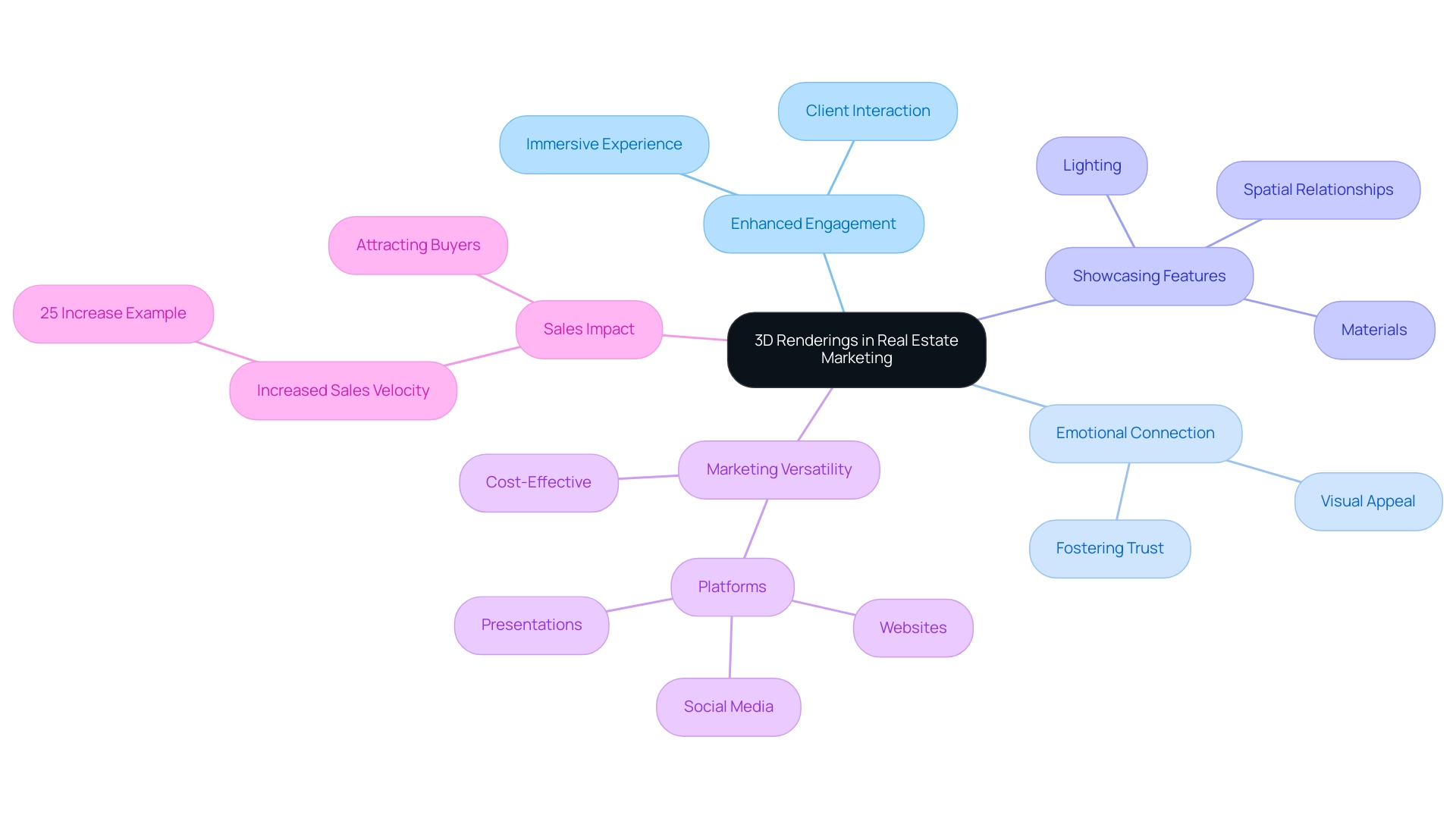
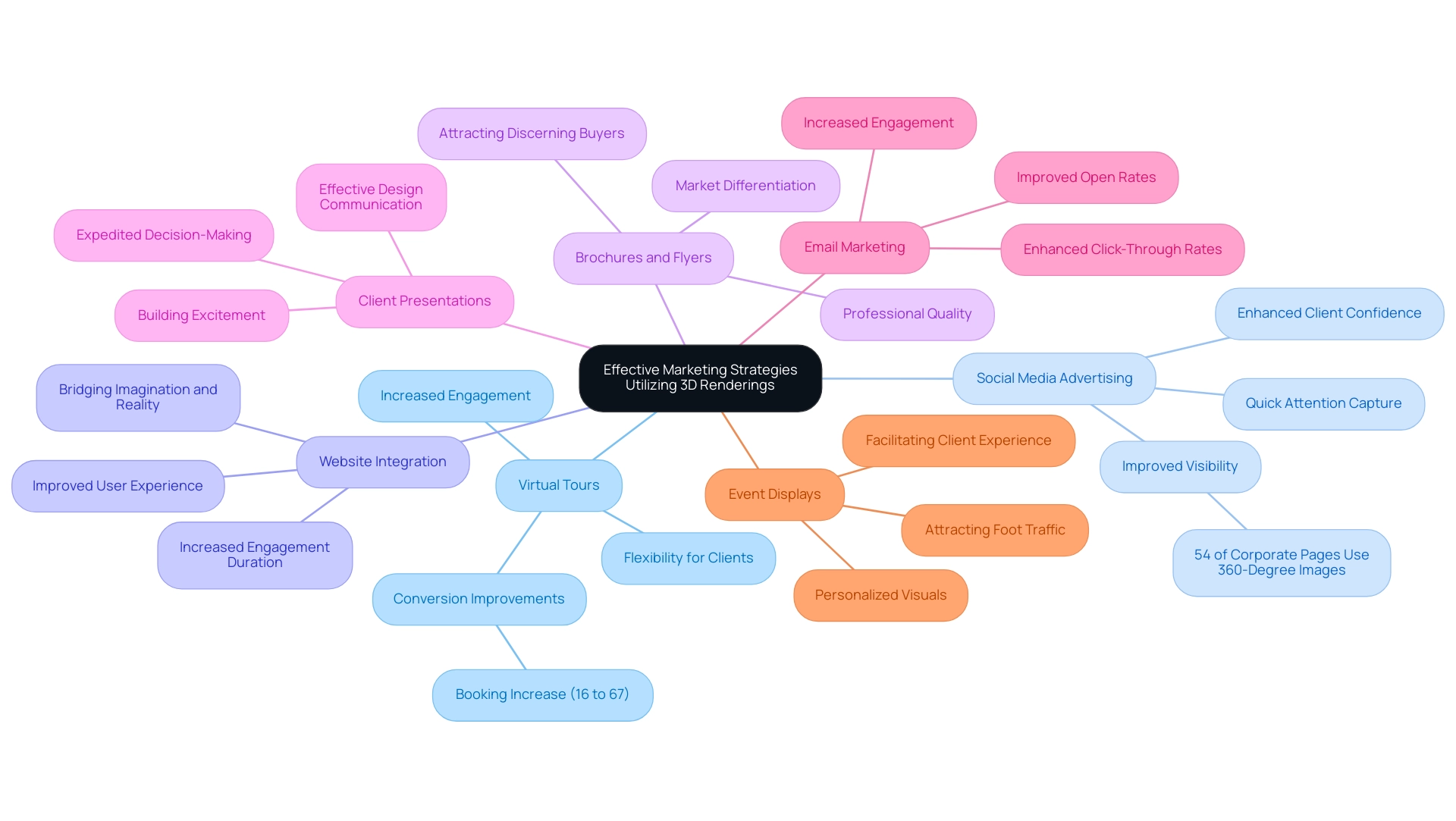
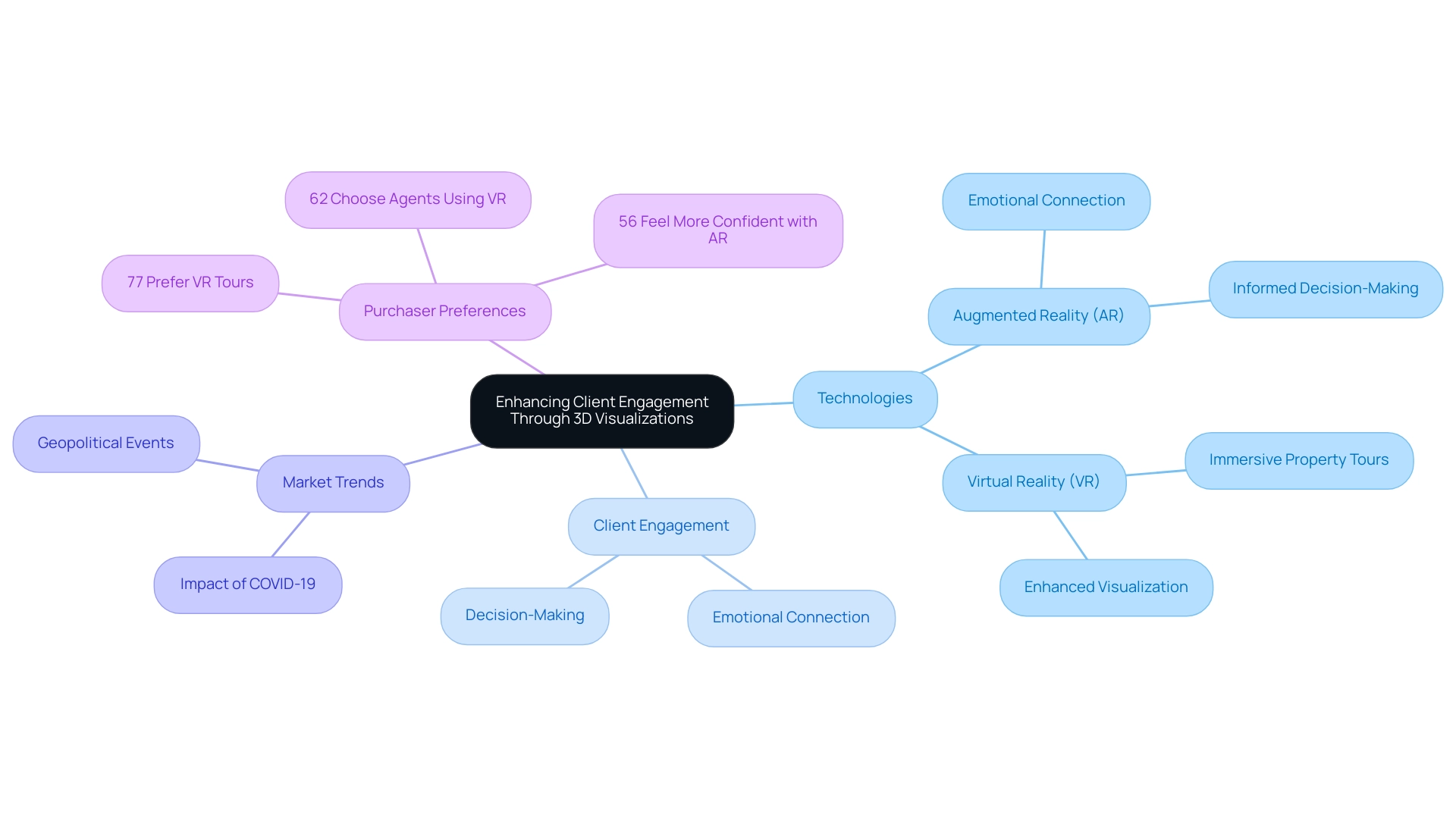
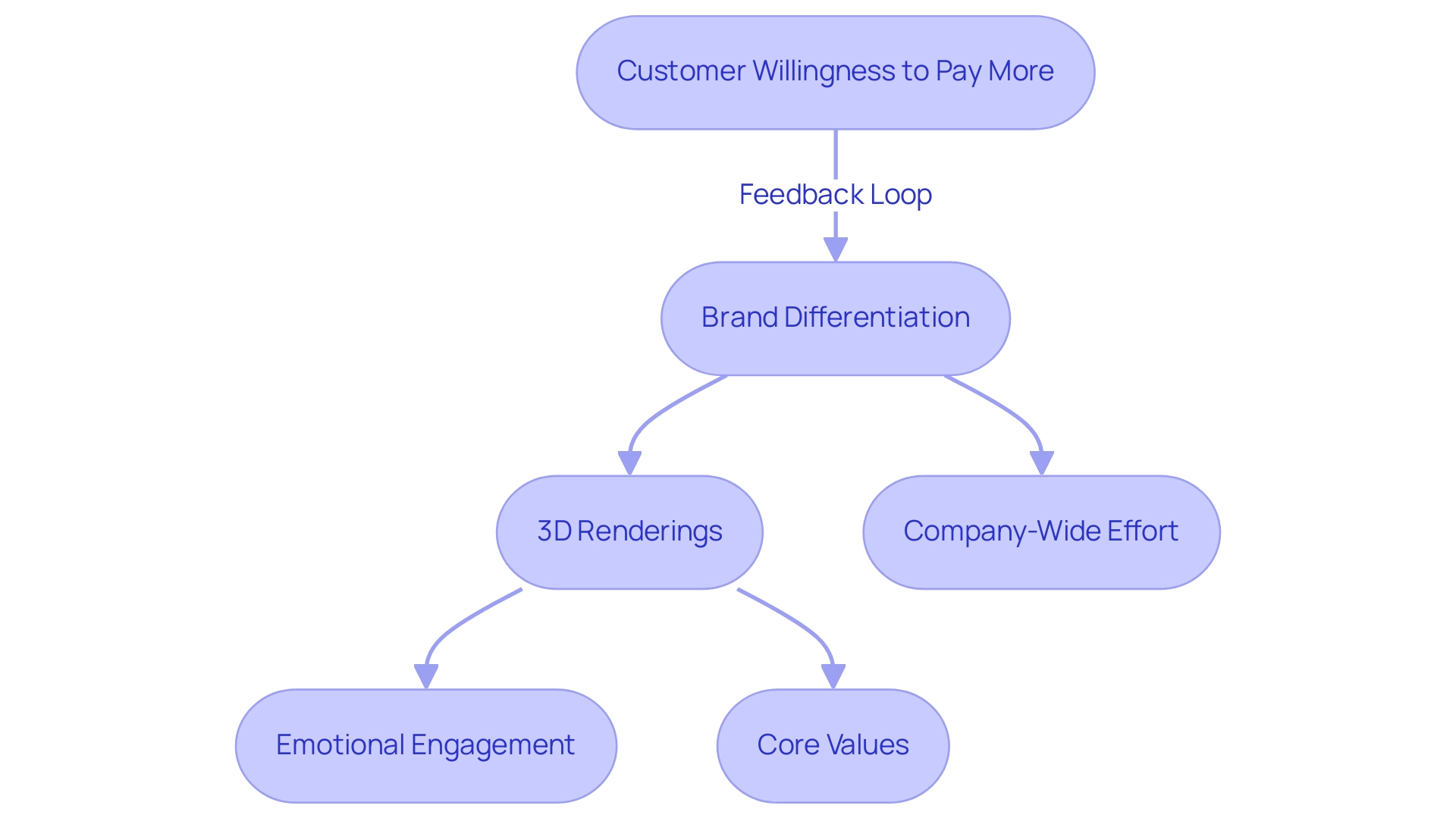
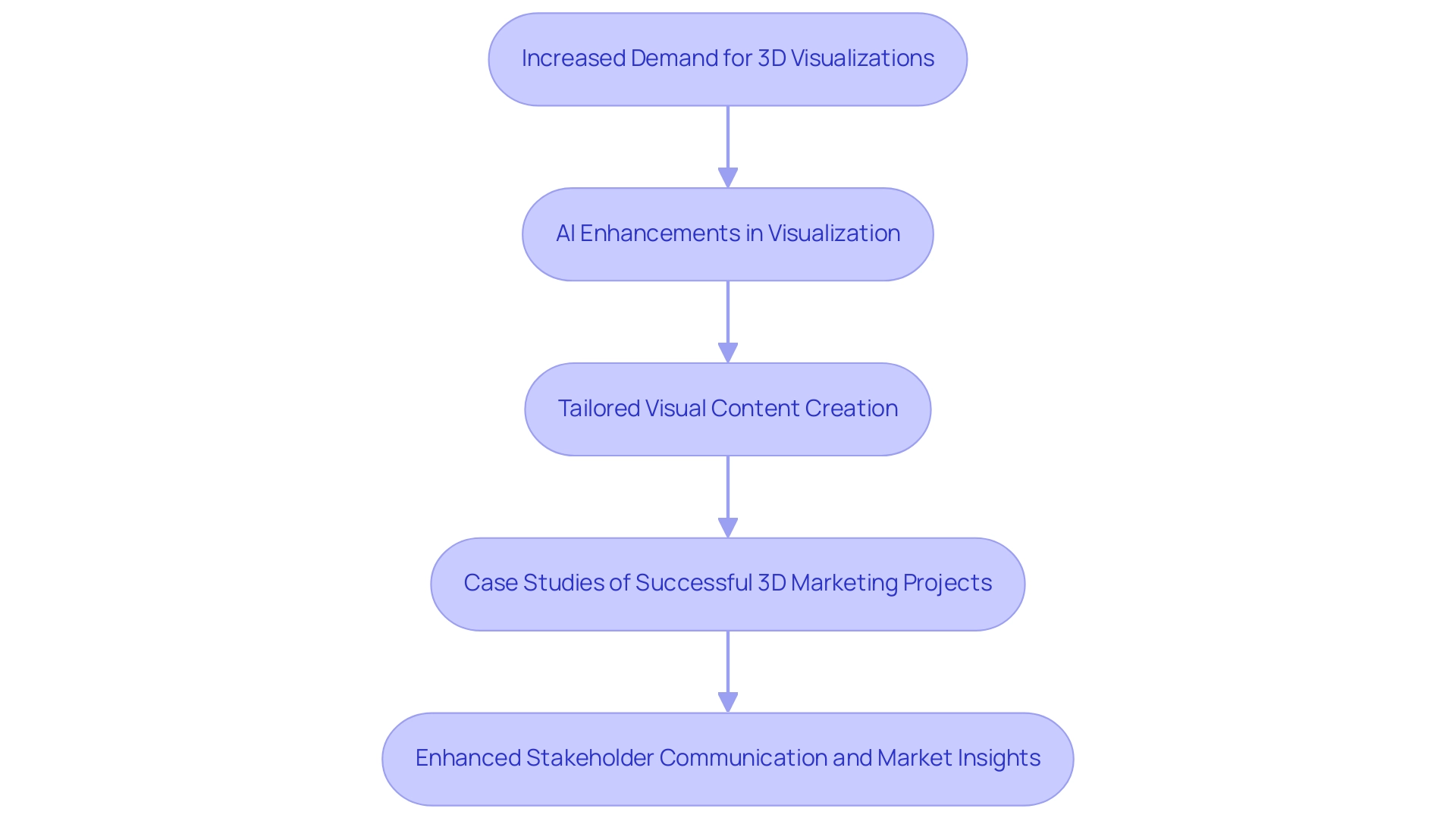
0 Comments